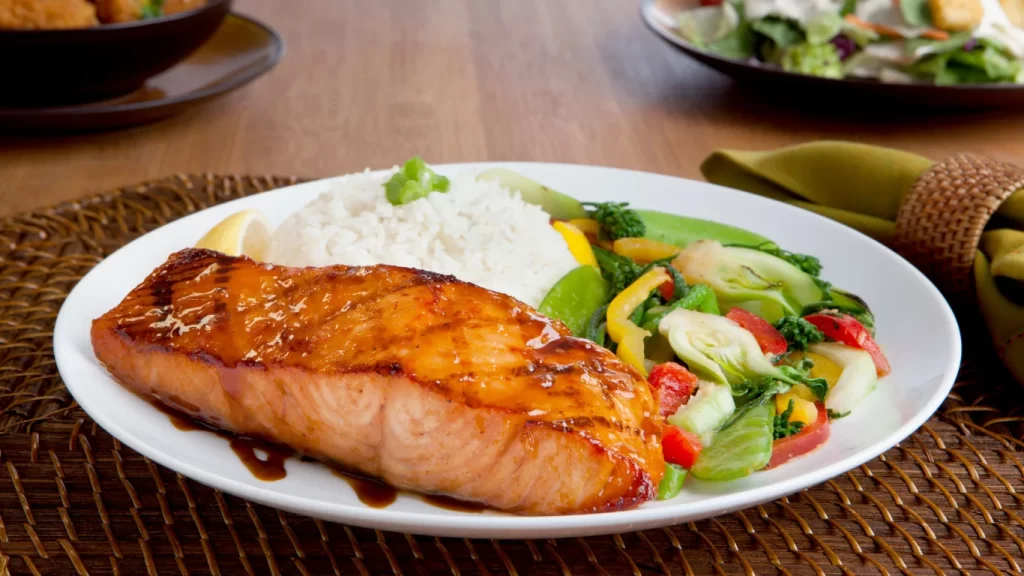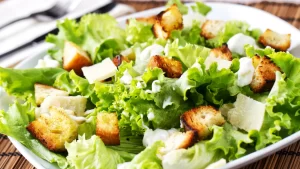When it comes to quick, flavorful, and healthy weeknight dinners, few things beat a perfectly glazed miso salmon recipe. Combining the rich umami of miso paste with the tang of soy sauce, the sweetness of honey or maple syrup, and the depth of ginger and garlic, this marinade is nothing short of perfection. With minimal ingredients and a straightforward process, this dish is easy to prepare and sure to satisfy the whole family.
In this recipe, we’ll walk you through the steps to prepare the perfect miso salmon recipe, explain how to marinate and bake the fish for maximum flavor, and share tips on how to customize the marinade to suit your taste buds. Whether you’re new to cooking salmon or a seasoned home chef, this recipe is designed for success. Let’s dive in!
What is Miso?
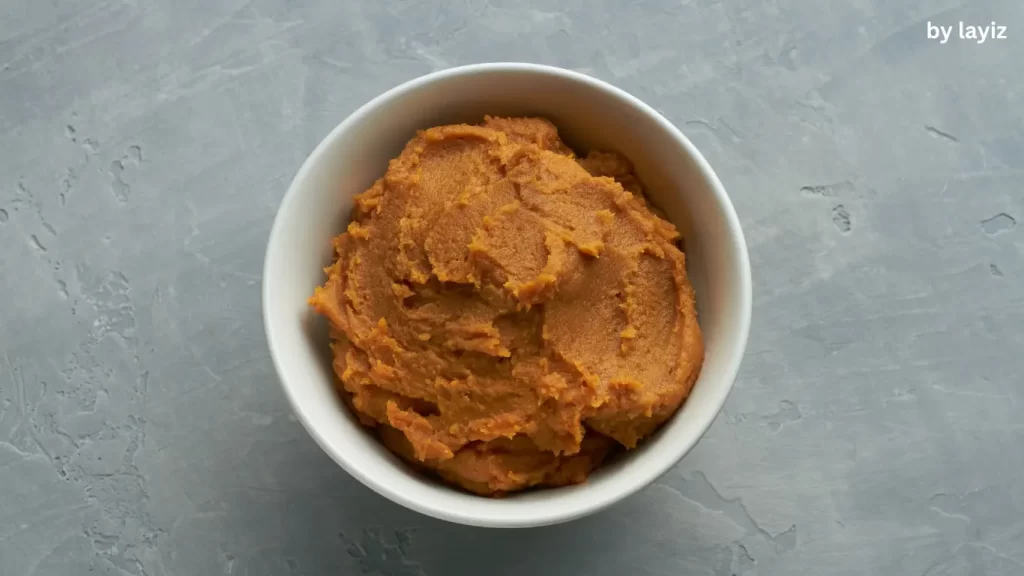
Before jumping into the recipe, let’s take a moment to talk about miso. Miso is a fermented soybean paste that forms the backbone of many Japanese dishes. Available in different varieties (white miso, red miso, and more), it provides a savory, salty, and umami-rich flavor that pairs beautifully with fish, particularly salmon. White miso, known as “shiro miso,” is the mildest and sweetest, making it the perfect choice for this miso-glazed salmon recipe.
Benefits of Miso Salmon recipe
- High in Omega-3s: Salmon is rich in healthy fats, particularly omega-3 fatty acids, which support heart and brain health.
- Protein-Packed: This meal is high in lean protein, making it a great option for muscle repair and overall health.
- Rich in Flavor: The umami flavors from miso, soy sauce, and mirin make this a standout dish that’s both savory and slightly sweet.
- Quick and Easy: With only a few key ingredients and minimal prep time, you can whip up a restaurant-quality dish in under 30 minutes.
Ingredients
For the Graham Cracker Crust:
4 salmon fillets (about 6 oz each, preferably wild-caught)
3 tbsp white miso paste (shiro miso)
2 tbsp soy sauce (or tamari for a gluten-free option)
1 tbsp mirin (Japanese rice wine)
1 tbsp sake (optional, adds depth)
1 tbsp rice vinegar (for balance)
1 tbsp honey or maple syrup (for sweetness)
2 tsp sesame oil (to add a subtle nutty flavor)
1 tbsp freshly grated ginger
2 garlic cloves, minced
1 tsp toasted sesame seeds (optional, for garnish)
Lemon wedges (for serving)
Equipment Needed
- A mixing bowl for the marinade
- A whisk or spoon for mixing
- A baking sheet lined with parchment paper or aluminum foil
- An oven preheated to 400°F (200°C)
- A small brush to coat the salmon with the marinade
Instructions
Prepare the Miso Marinade
In a medium-sized mixing bowl, combine the miso paste, soy sauce, mirin, sake, rice vinegar, and honey. Whisk together until you achieve a smooth consistency.
Next, add the freshly grated ginger, minced garlic, and sesame oil to the mixture. Maintain the whisking process until all components are thoroughly integrated. This marinade is packed with umami flavor, which will seep into the salmon as it marinates.
Marinate the Salmon
Pat your salmon fillets dry with a paper towel to remove any excess moisture. This helps the marinade adhere better to the fish.
Place the fillets in a shallow dish or resealable plastic bag, and pour the miso marinade over the top, making sure each fillet is generously coated. Enclose the dish or secure the bag, allowing the salmon to marinate in the refrigerator for a minimum of 30 minutes. For a deeper flavor, you can marinate the fish for up to 4 hours, but avoid going longer than this, as the miso is quite strong.
Preheat the Oven
As the salmon marinates, set your oven to preheat at 400°F (200°C). Prepare a baking sheet by lining it with parchment paper or aluminum foil to facilitate easy cleanup.
Bake the Miso-Glazed Salmon
Once the salmon has finished marinating, remove it from the refrigerator and place the fillets on the prepared baking sheet, skin side down. Use a brush to apply any remaining marinade to the top of the fish for extra flavor.
Bake the salmon for 12 to 15 minutes, depending on the thickness of your fillets. You’ll know it’s done when the fish flakes easily with a fork and the internal temperature reaches 145°F.
For an extra touch of caramelization, switch the oven to the broil setting for the last 2-3 minutes of cooking. Keep an eye on it to avoid burning the glaze.
Serve and Enjoy
Once your salmon is perfectly cooked, remove it from the oven and let it rest for a couple of minutes. Garnish with toasted sesame seeds and serve with a side of lemon wedges for a bright, zesty finish.
Pair this miso-glazed salmon with steamed rice, sautéed vegetables, or a crisp salad for a complete meal that’s not only delicious but also nutrient-dense.
Customizing Your Miso Salmon Recipe
One of the best things about this recipe is how easily it can be adapted to suit your preferences. Here are a few variations:
Gluten-Free Miso Salmon
To make this dish gluten-free, simply swap out the soy sauce for tamari, which is a gluten-free alternative. Be sure to check that your miso paste is also gluten-free, as some varieties may contain traces of wheat.
Low-Sodium Version
If you’re watching your sodium intake, opt for low-sodium soy sauce or coconut aminos in place of regular soy sauce. This will still give you that rich, umami flavor without the extra salt.
Air Fryer Miso Salmon
For a quicker option, you can cook this recipe in an air fryer. Preheat the air fryer to 375°F and cook the salmon fillets for 8-10 minutes or until they reach an internal temperature of 145°F.
Sweet Miso Salmon
If you love a sweeter marinade, increase the amount of honey or maple syrup. This will give the salmon a more pronounced caramelized glaze once baked.
Tips for Perfect Miso Salmon recipe
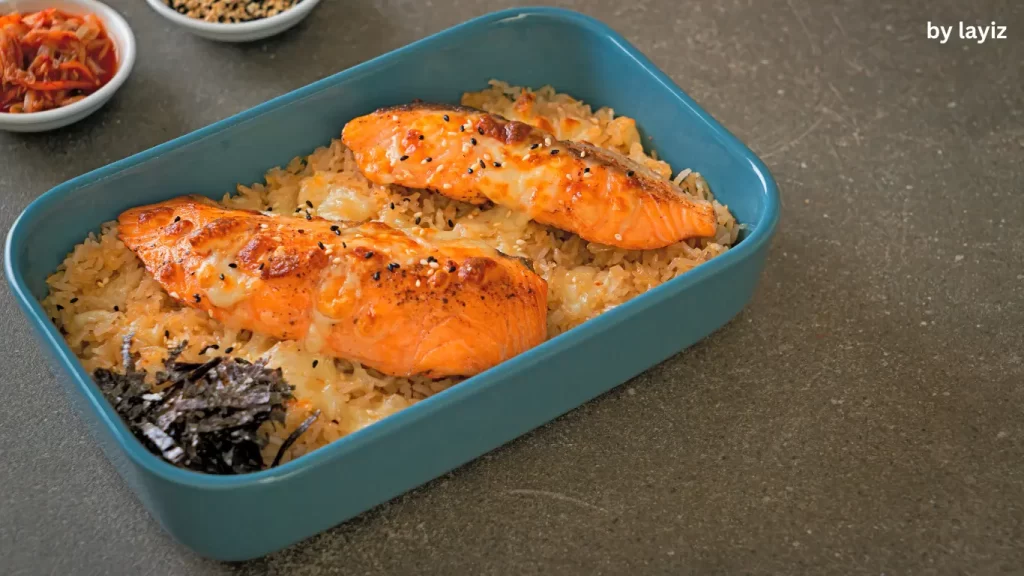
- Don’t Over-Marinate: Miso is a strong flavor, and while marinating helps infuse the salmon with that rich, savory goodness, it’s important not to overdo it. Sticking to a marinating time of 30 minutes to 4 hours will yield the best results.
- Use Fresh Salmon: For the best flavor and texture, opt for wild-caught salmon. It has a higher fat content, which makes it juicy and tender when cooked.
- Pat Dry Before Marinating: Removing excess moisture from the salmon before adding the marinade ensures better flavor absorption.
- Broil for a Crispy Finish: If you love a crisp, caramelized exterior, broil the salmon for a few minutes at the end of the baking time. Ensure that you monitor it closely to prevent any risk of burning.
- Test for Doneness: Salmon is done when it reaches an internal temperature of 145°F and flakes easily with a fork.
Nutritional Information
This miso salmon recipe isn’t just tasty—it’s also packed with nutrients. Here’s a quick look at the nutritional profile per serving:
- Calories: 300-350
- Protein: 30g
- Fats: 18g (including omega-3 fatty acids)
- Carbohydrates: 10g
- Fiber: 1g
- Sugars: 5g (from honey or maple syrup)
These numbers are estimates and may vary depending on the exact ingredients and portion sizes used.
Conclusion: The Perfect Weeknight Dinner
This miso-glazed salmon recipe is not only incredibly flavorful but also easy to prepare, making it the perfect dinner option for busy weeknights. The combination of savory miso, sweet honey, and zesty ginger creates a rich, umami-packed dish that is sure to become a family favorite. Whether you’re looking for a healthy meal or something to impress dinner guests, this recipe ticks all the boxes.
Try it out for your next meal, and enjoy the rich flavors of Japanese-inspired cuisine in the comfort of your own home!
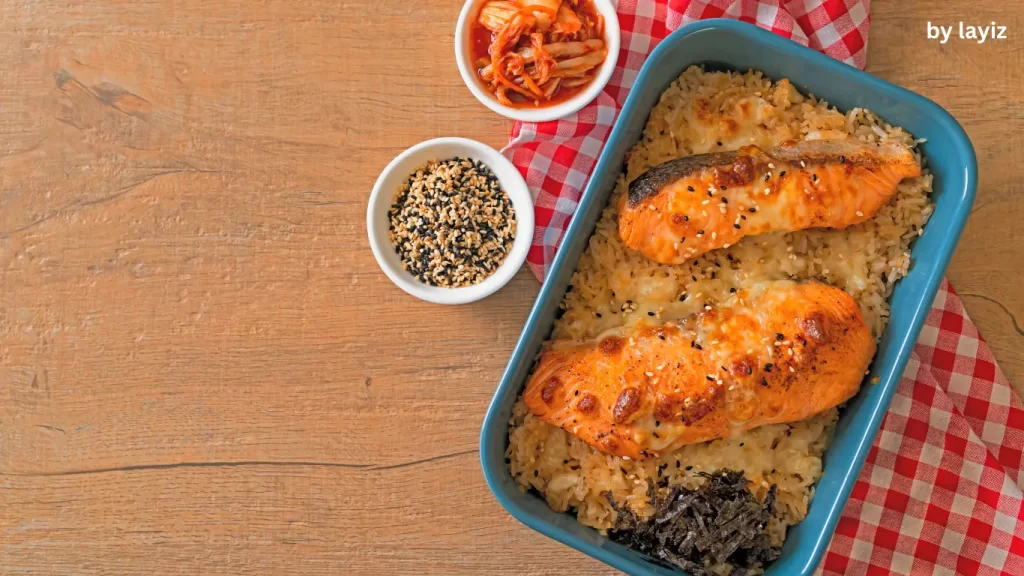
Frequently Asked Questions
Is it permissible to substitute a different variety of fish in this recipe?
Yes! While salmon is the most common choice, you can easily swap it out for other fish like cod, halibut, or sea bass. The duration of cooking may differ somewhat based on the thickness of the fish.
What can I serve with miso salmon?
This dish pairs beautifully with steamed jasmine rice, quinoa, or even a crisp cucumber salad. For vegetables, try roasted broccoli, carrots, or bok choy.
How long can I store leftovers?
Leftover miso salmon can be stored in an airtight container in the fridge for up to 3 days. You can reheat it in the oven or microwave, but be careful not to overcook it during reheating.
Can I freeze miso salmon recipe?
Yes, you can freeze the marinated salmon before baking. When you’re ready to cook, simply thaw it in the fridge overnight and bake as usual.
